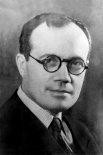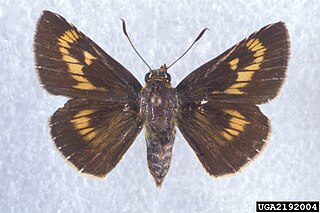Related Research Articles

The Agonoxeninae are a subfamily of moths.

José Américo de Almeida was a Brazilian writer, a politician, a lawyer and a teacher.
Indotyphlops pammeces, the South India worm snake, is a harmless blind snake species found in southern India. No subspecies are currently recognized.

Kurt Landesberger was an Austrian born Argentine film director of the 1950s and 1960s.
"Houston, we have a problem" is popularly quoted as a phrase spoken during Apollo 13, a NASA mission in the Apollo space program and the third meant to land on the Moon. After an explosion occurred on board the spacecraft en route to the Moon at 55:54:53, Jack Swigert, the command module pilot, reported to Mission Control Center in Houston, Texas: "Okay, Houston ... we've had a problem here." After being prompted to repeat his words by Jack R. Lousma, the capsule communicator at Mission Control, Jim Lovell, the mission commander, responded: "Ah, Houston, we've had a problem."
Stictoptera is a genus of moths of the family Euteliidae erected by Achille Guenée in 1852.
Roberto Marcolongo was an Italian mathematician, known for his research in vector calculus and theoretical physics.

Problema byssus, the byssus skipper or bunchgrass skipper, is a butterfly of the family Hesperiidae. It is found along the Atlantic coastal plain of North America, from North Carolina south to Florida and the Gulf States and from northern Indiana west to Iowa and south to Missouri and Kansas.
Pammeces is a genus of moths in the family Agonoxenidae. It was formerly included in the Cosmopterigidae.

"El Problema" is a Latin pop song written, produced and performed by Guatemalan Grammy Award winner singer-songwriter Ricardo Arjona. It was released as the lead single from his ninth studio album, Santo Pecado (2002). It is also recognized as one of Ricardo Arjona's signature songs.
Pammeces pallida is a moth of the family Agonoxenidae. It was described by Thomas de Grey, 6th Baron Walsingham, in 1897. It is found in the West Indies.
Pammeces phlogophora is a moth of the family Agonoxenidae. It was described by Walsingham in 1909. It is found in Panama.
Pammeces citraula is a moth of the family Agonoxenidae. It was described by Edward Meyrick in 1922. It is found in Peru.
Pammeces crocoxysta is a moth of the family Agonoxenidae. It was first described by Edward Meyrick in 1922. It is found in Brazil.
Pammeces albivittella is a moth of the family Agonoxenidae. It was described by Philipp Christoph Zeller in 1863. It is found in Venezuela.
Labdia pammeces is a moth in the family Cosmopterigidae. It is found in Australia, where it has been recorded from Queensland.
Kockelellidae is an extinct conodont family.
Paraconodontida is an extinct order of conodonts. It contains two superfamilies, Amphigeisinoidea and Furnishinoidea.
Fryxellodontidae is an extinct family of conodonts in the order Proconodontida.
Dreampunk is a microgenre of electronic music characterized by its focus on cinematic ambience and field recordings, combined with various traits and techniques from electronic genres such as techno, jungle, electro, and dubstep.
References
- ↑ Beccaloni, G.; Scoble, M.; Kitching, I.; Simonsen, T.; Robinson, G.; Pitkin, B.; Hine, A.; Lyal, C., eds. (2003). "Pammeces problema". The Global Lepidoptera Names Index . Natural History Museum . Retrieved May 11, 2018.